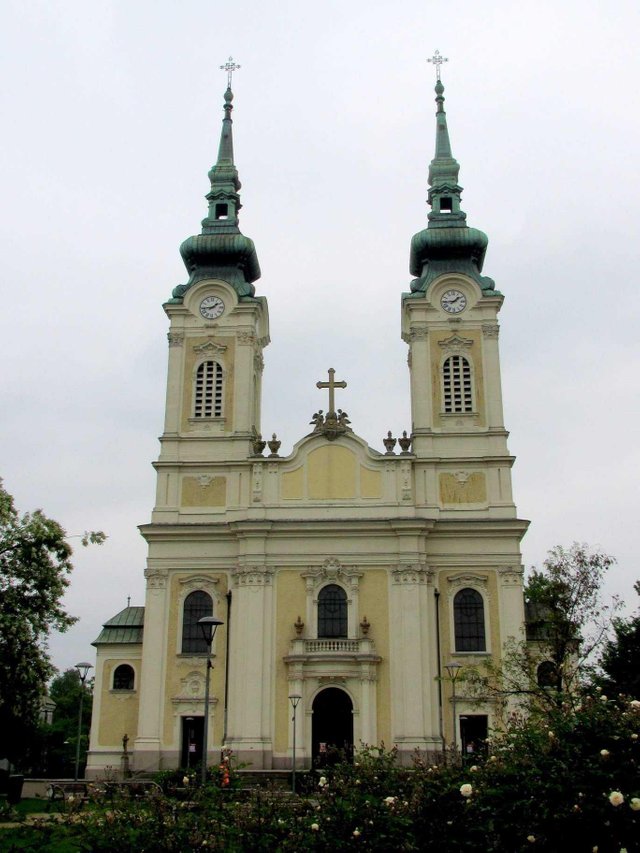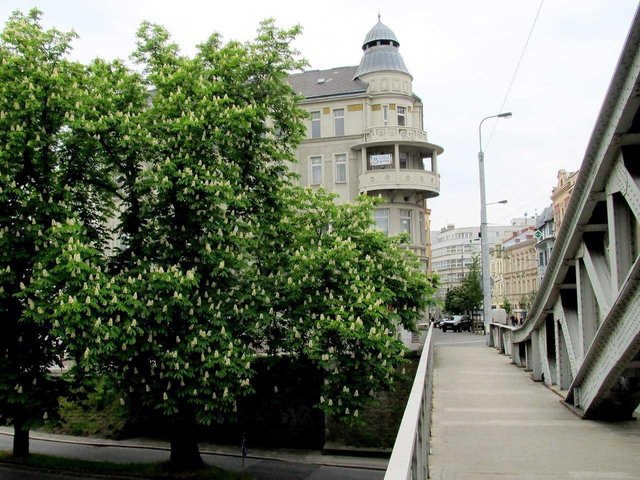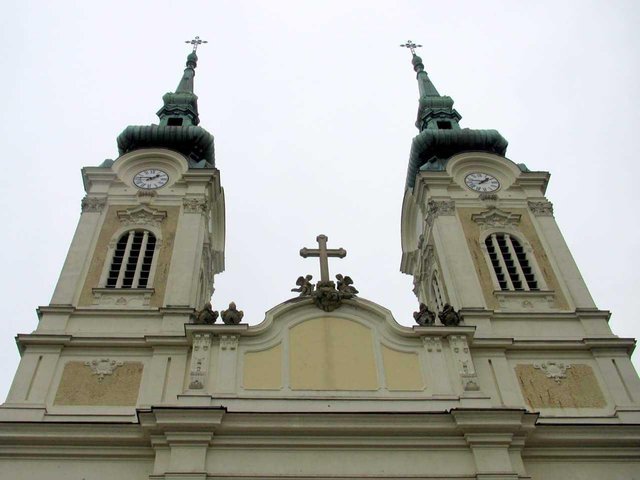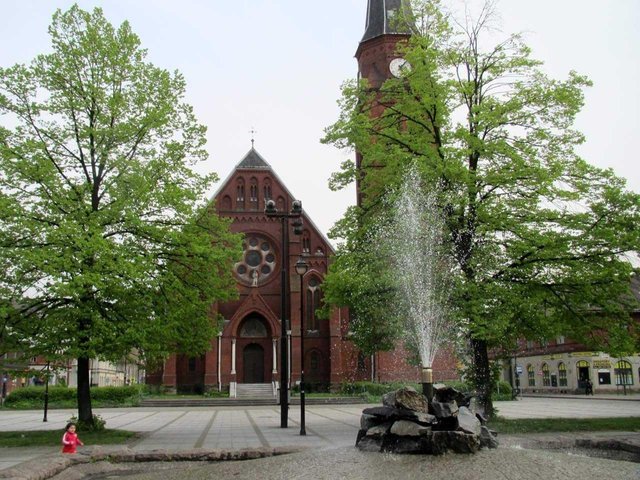The oldest history, Ostrava in the Middle Ages, the development of craft production, the city of coal and steel, the great Ostrava, the return to freedom and democracy.
Ostrava was named after the Ostravice River, which divides the city into the Moravian and Silesian parts. The foundation of the word Ostrava means "sharply, fast, briskly flowing river".

The settlement of the territory on which today's city lies is first documented in the earlier Stone Age. About 25,000 years ago, Mamut hunters had camped on their hill Landek, as evidenced by numerous archaeological finds. The most remarkable discovery in 1953 was a 48 mm high statue, the torso of a female figure from a crevle, called the Petrovicka (Landecka) Venus. Archaeologists have found evidence that prehistoric hunters have used coal from the seams to surface as fuel. This is the first documented use of black coal in the world. On the legendary Mount Landek, one of his numerous fortified settlements built the Slavic Holasic tribe in the 8th century. Sometime in the second half of the 13th.
The oldest Ostrava city belongs to the Polish (today Silesian) Ostrava, which is mentioned in one of Pope Gregory IX's papers. already in 1229. To preserve the border between the Polish and the Czech state, the Slezskoostravský castle was built on the headland of the Lučiny and Ostravice rivers. It was recorded in a document dating back to 1297. Today's Moravian Ostrava, whose name is first mentioned in the will of Olomouc Bishop Bruno of Schauenburk in the year 1267, the status of the city was definitely granted before 1279. The newly built city became the center for the episcopal villages around. Its core was a quadrangular square (today's Masaryk Square). In 1362 the king and emperor Charles IV. granted the right to hold a 16-day annual market. Privilegium meant an increase in the prestige of Ostrava, thanks to which the town on the left bank of Ostravice could be on 14th. century into an important point on the map of medieval market makers. Hussite wars did not interfere with the life of the city. In 1438 Hussite commander Jan Čapek of Sán won him for a short time, followed by warrior Jan Talafús from Ostrov. In 1437 Moravia Ostrava was finally integrated into the Hukvaldy estate, whose fate was shared until 1848.

The only stone building in the city was, together with the chateau (the seat of the burgrave), the Church of St. Wenceslas (first written mention 1297). The basic system of city walls was built between 1371-1376. The building of the Town Hall on today's Masaryk Square is first mentioned in 1539. It has undergone several building modifications, the present appearance dates from 1859. In 1564 the existence of a wooden chapel of St. Catherine in Hrabová. In the first half of the 16th century, the position of Ostrava was strengthened thanks to the development of craftsmanship, especially knitwear, weaving and tailoring. An important part of the economy has become a profitable fishpond. In 1533 the town purchased the village of Čertova Lhota (now Mariánské Hory) and in 1555 Přívoz. In addition to the military campaigns of the natural disaster - floods and fires, the military life of Moravia Ostrava was adversely affected. The greatest fire in 1556 practically destroyed the houses on the square. In 1625, about half of the population died as a result of a plague epidemic. During the Thirty Years' War, Moravská Ostrava was one of the most affected cities in the Czech lands. It was occupied by the Danish army, and from 1642 by the Swedes' Swedish side.

The revival of economic life in the Ostrava region resulted in the discovery of coal in 1763 in the Búrna valley in Poland's Ostrava. Its occurrence four years later was confirmed by the mining expert Jan Jakub Lutz. Nevertheless, with the regular mining, the owner of the estate of Franz Josef Count Earl Wilczek started in 1787. The connection of Galicia to the monarchy in 1772 allowed the expansion of livestock trade and partly stimulated economic development. The rapid growth of the agglomeration started in 1828 in the founding of ironworks in the village of Vitkovice by Olomouc archbishop Rudolf Habsburg. The connection to the Ferdinand's Northern Railway in 1847 via the railway station in Svinov and Přívoz caused Ostrava to become one of the most important industrial centers of the Austro-Hungarian monarchy in the second half of the 19th century. The boom of the industry has also provoked the influx of the population. In 1830, two thousand people lived in Moravian Ostrava, exceeding their number in 1350 in fifty years. The proportion of German and Polish-speaking population has increased significantly. In particular, immigrants occupied a number of workers colonies in Poland's Ostrava, Vítkovice and other municipalities. The social and cultural life of nationalities living in the city centered around the 19th and 20th centuries in the Czech National House (now the Theater of J. Myron), the German House (destroyed at the end of the Second World War), the Polish House and the Municipal Theater Theater of A. Dvořák). The most important church building was the Basilica of the Divine Savior in 1889. After the establishment of Czechoslovakia in 1918, thanks to iron-works and mines, Ostrava retained a significant economic position and slowly transformed itself into an administrative, social and cultural center. The proportion of German and Polish-speaking population has increased significantly. In particular, immigrants occupied a number of workers colonies in Poland's Ostrava, Vítkovice and other municipalities. The social and cultural life of nationalities living in the city centered around the 19th and 20th centuries in the Czech National House (now the Theater of J. Myron), the German House (destroyed at the end of the Second World War), the Polish House and the Municipal Theater Theater of A. Dvořák). The most important church building was the Basilica of the Divine Savior in 1889. After the establishment of Czechoslovakia in 1918, thanks to iron-works and mines, Ostrava retained a significant economic position and slowly transformed itself into an administrative, social and cultural center. The proportion of German and Polish-speaking population has increased significantly. In particular, immigrants occupied a number of workers colonies in Poland's Ostrava, Vítkovice and other municipalities. The social and cultural life of nationalities living in the city centered around the 19th and 20th centuries in the Czech National House (now the Theater of J. Myron), the German House (destroyed at the end of the Second World War), the Polish House and the Municipal Theater Theater of A. Dvořák). The most important church building was the Basilica of the Divine Savior in 1889. After the establishment of Czechoslovakia in 1918, thanks to iron-works and mines, Ostrava retained a significant economic position and slowly transformed itself into an administrative, social and cultural center. The social and cultural life of nationalities living in the city centered around the 19th and 20th centuries in the Czech National House (now the Theater of J. Myron), the German House (destroyed at the end of the Second World War), the Polish House and the Municipal Theater Theater of A. Dvořák). The most important church building was the Basilica of the Divine Savior in 1889. After the establishment of Czechoslovakia in 1918, thanks to iron-works and mines, Ostrava retained a significant economic position and slowly transformed itself into an administrative, social and cultural center. The social and cultural life of nationalities living in the city centered around the 19th and 20th centuries in the Czech National House (now the Theater of J. Myron), the German House (destroyed at the end of the Second World War), the Polish House and the Municipal Theater Theater of A. Dvořák). The most important church building was the Basilica of the Divine Savior in 1889. After the establishment of Czechoslovakia in 1918, thanks to iron-works and mines.

Ostrava retained a significant economic position and slowly transformed itself into an administrative, social and cultural center.
To Be Continued
upvote for me please? https://steemit.com/news/@bible.com/2sysip